Soil Health Knowledge Meets Practice In Australia's Cotton Heartland

By Jasmine Grinyer - Senior Research Officer (Rural Industries)
During October, 2015, the Global Centre for Land Based Innovation at Western Sydney University organised a workshop entitled "Incorporating soil health management practices to sustainably increase productivity and profitability" in Narrabri, to engage with the cotton community about the benefits of improving soil health.
Prof Karl Ritz (University of Nottingham, UK), a global leader in soil health and Brajesh Singh (Global Centre for Land-based Innovation) were joined by leading scientists from CSIRO, NSW DPI, OEH and WSU to provide participants with an overview of soil health concepts – including information about the components that make a healthy soil, the latest soil health research and technological advancements, ways to measure soil health and suggestions for how soil health measurements can be incorporated into everyday management decisions.
The soil health workshop attracted growers, advisors, industry officers and communicators both within, and external to, the cotton industry.
This is an excellent initiative where growers and consultants and researchers meet on-farm to discuss new innovations and technologies and how they can be improved and adopted in order to increase farm productivity and profitability...
The Importance Of Soil Health
One of the main messages to come from the workshop was that increasing soil health can improve farm productivity by 15–20 per cent and in combination with the use of efficient plant varieties, a 40–50 per cent increase in productivity can be achieved. Five components are needed to ensure soil health is maintained:
- Water
- Structure
- Nutrients
- Organic matter and
- Biota including soil fauna and microbes.
Healthy soil contain billions of microbes including bacteria and fungi that support soil structure leading to improved nutrient availability and acquisition, disease resistance, water filtration, and aeration. Due to their role in providing plants with growth limiting nutrients, evidence was presented that nurturing soils and the microbes within them will reduce our reliance on synthetic chemical fertilisers and could also reduce our reliance on pesticides, saving costs for growers and leading to more sustainable farming methods.
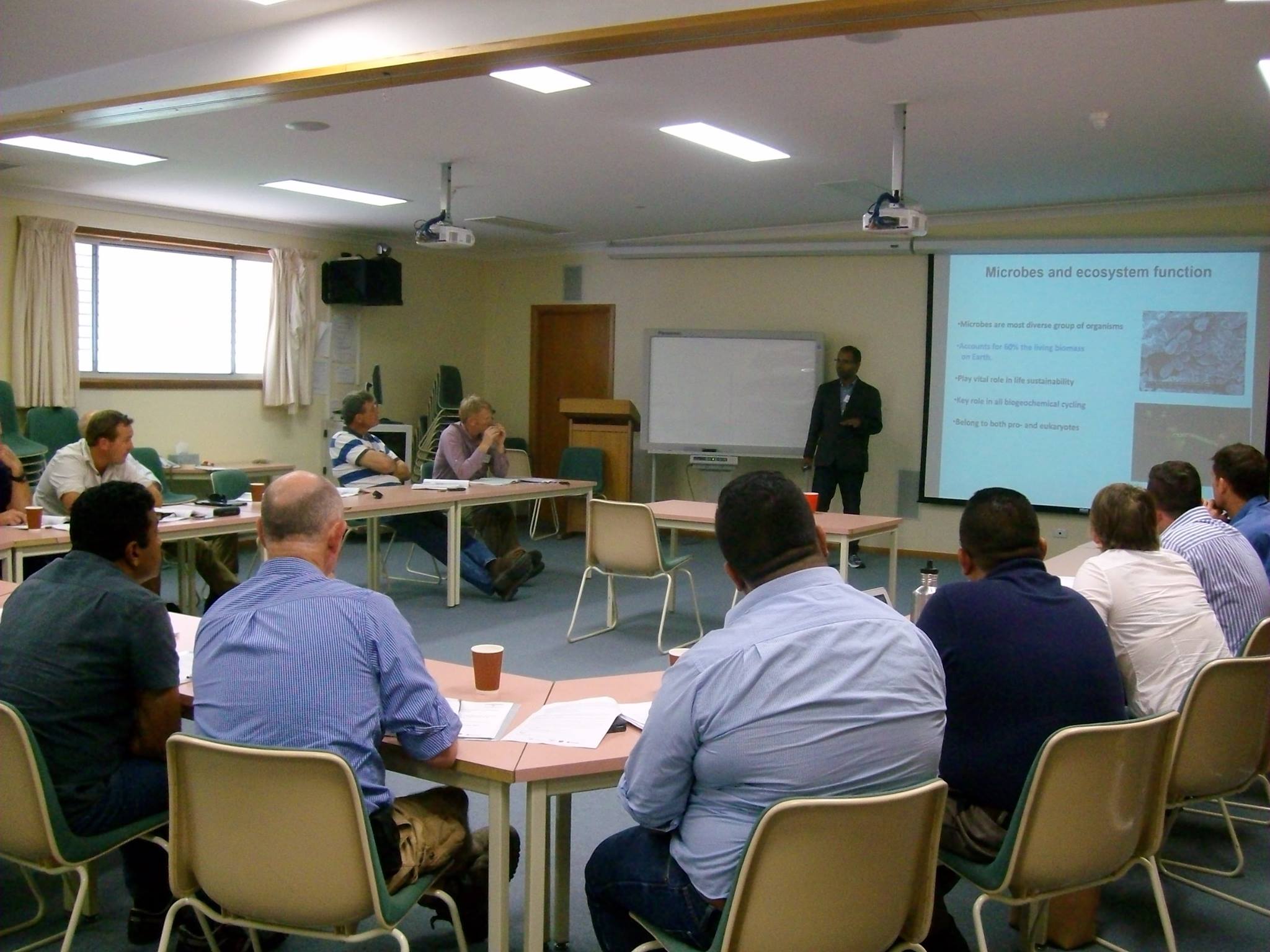
Prof Brajesh Singh presents on the role of microbial ecology in soil health
The workshop identified approaches to achieve healthy soils. It was discussed that careful management of soil organic matter (SOM) is a good starting point. Microbes utilise SOM as a food source and higher levels of SOM will support a greater diversity of microbes. This diverse population of microbes will then aid plant growth, nutrient supply, disease resistance and, ultimately, will positively impact yield. Ways to improve SOM levels include the use of cover crops and retaining plant material on-farm for decomposition. Measuring soil health is then a simple matter of monitoring the SOM levels in paddocks over time.
This will provide an indication if SOM levels are dropping, being maintained or are increasing over time. But the importance of the quality of SOM was also highlighted. Other ways to increase soil health include the use less destructive methods of tillage to minimise soil structural damage and help to support soil biota.
The move away from mono-cropping will also help to increase both soil biological and structural health and provide some natural resilience to agricultural pests and diseases. Careful consideration of crop rotations can significantly reduce the reliance on synthetic fertilisers and pesticides.
For example, rotation with an appropriate legume crop can provide a significant portion of the N requirements for cotton crops.
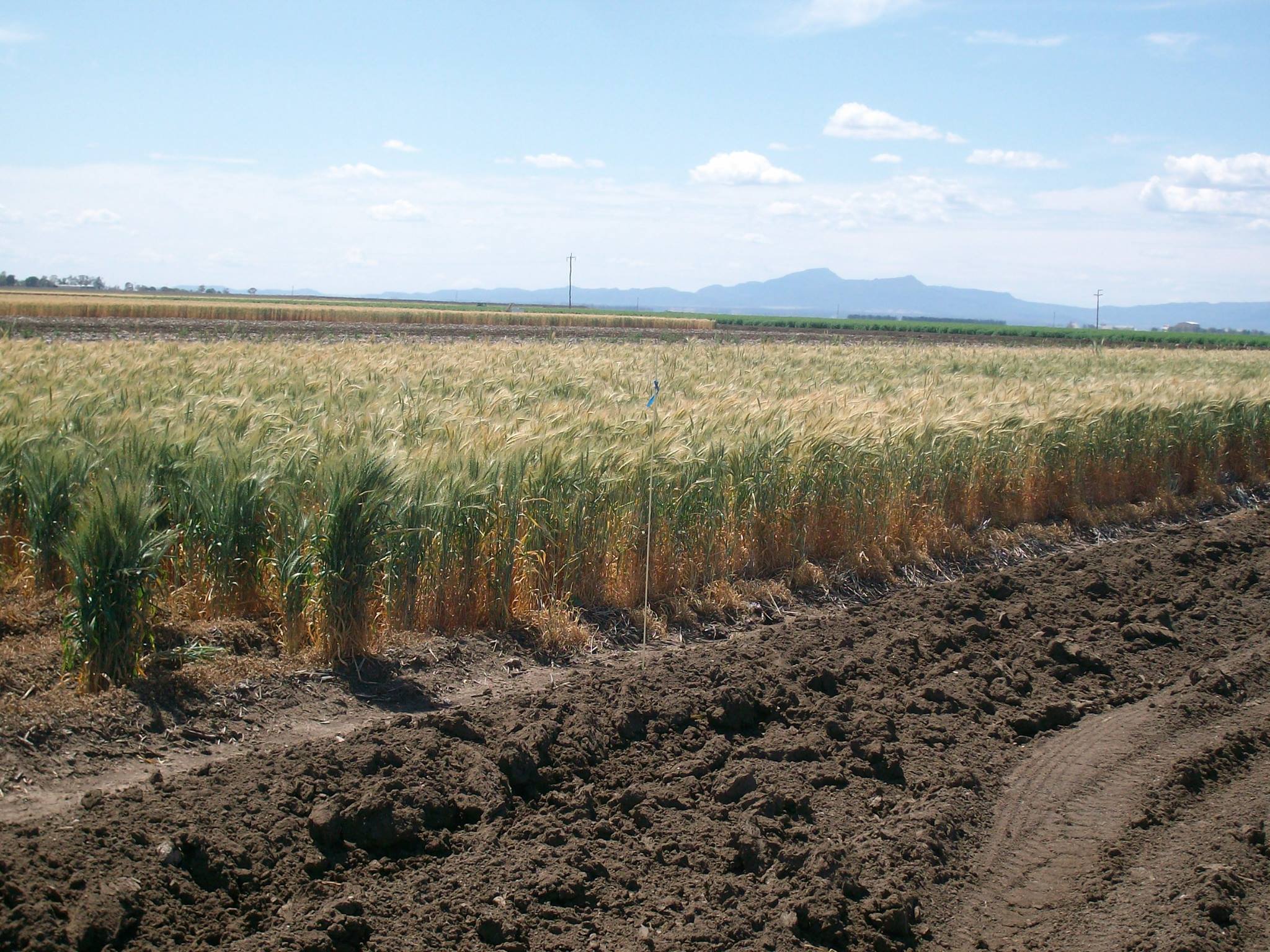
Wheat crops in Narrabri's heavy clay soils
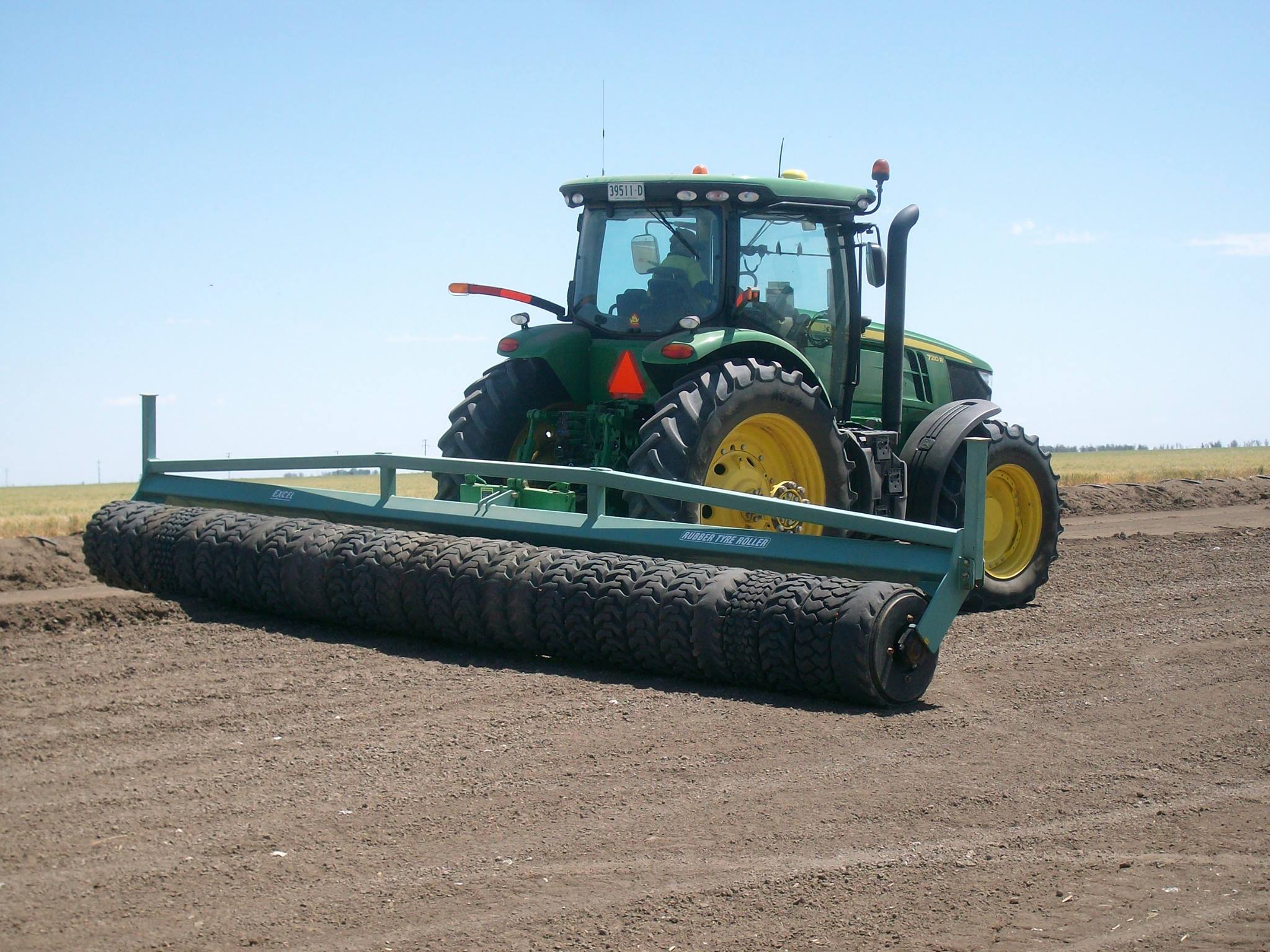
John Deere tractor rolling soil
Future Directions For Improving Soil Health
Through discussions with participants, it became evident that a knowledge gap exists between current soil health research and the best way for growers to adopt research outcomes into their management practises.
"I think what stops many mainstream farmers doing something more microbially friendly is the fear of the unknown. While they know their current system may be degrading carbon – they have a fair knowledge of what their crop outcome will be that year.If they were to change their system – they aren't clear on what the outcome might be and so they opt to do what they know," said Kirrily Blomfield (2014 NSW Farmer of the Year).
New extension-based research is urgently needed to provide farmers with information about which methods they can adopt easily, the direct costs involved, and how this could lead to crop yield increases in the future, alongside potential decreases in the use of fertiliser.
"We struggle to be able to demonstrate economic return – short and long (term)", wrote one participant from the workshop.
Until this information is available to growers, only a few will take the risk of spending money on improving soil health without knowing the long-term benefits (including financial) that may be gained.
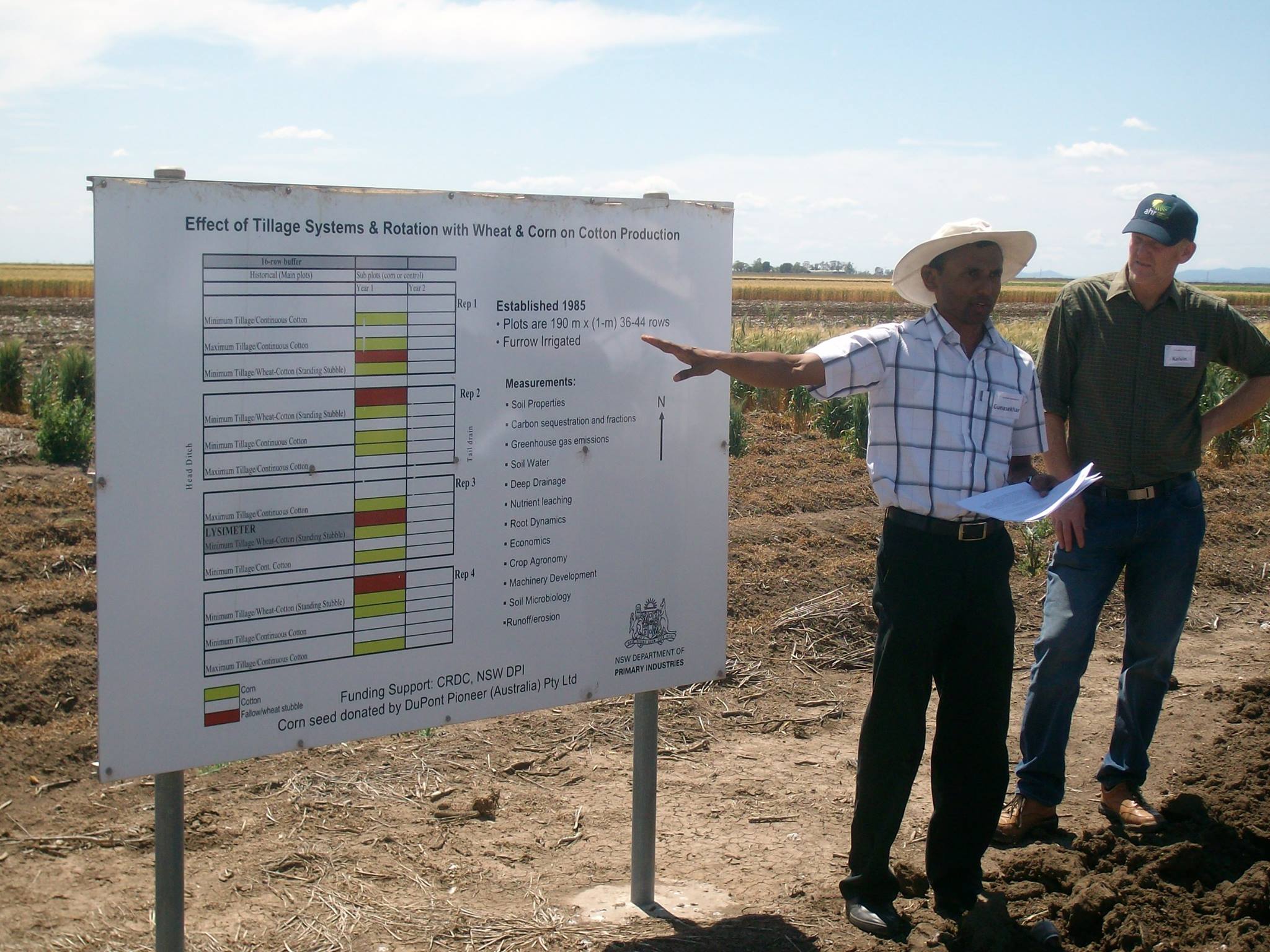
Dr Guna Nachimuthu from the NSW Department of Primary Industries
The soil health workshop was deemed a great success. The vast majority of participants (over 90 per cent) rated the workshop high, a subsequent survey indicated that these participants considered it either useful or extremely useful and left the workshop thinking about ways they could enhance their own soil health.
Allan Williams, Program manager at Cotton Research and Development Corporation (CRDC) said "this is an excellent initiative where industry (growers and consultants) and researchers sit together at a farm station to discuss new innovations and technologies and how they can be improved and adopted in order to increase farm productivity and profitability."
Prof Brajesh Singh said "One of the key goals of the Global Centre for Land-based Innovation is to transfer research knowledge, innovation and technologies to industries for accelerated adoption. It was great to see the enthusiastic participation and discussion from growers and consultants on this topic.We know there are some barriers in the adoption of research knowledge and this workshop provided a great opportunity to identify those barriers, but also to discuss some solutions."
He further added "I was extremely pleased to note that all participants were keen to improve their soil health, but it was suggested that industries should achieve this using a step-wise approach to systematically incorporate soil health in management practices."
The Global Centre for Land-Based Innovation aims to transfer research knowledge, innovation and technologies to industries for accelerated adoption. We know there are some barriers in the adoption of research knowledge and this workshop provided a great opportunity to identify those barriers, but also to discuss some solutions...
People And Research Profile
- Prof Karl Ritz (University of Nottingham, UK) gave keynote presentations outlining global perspectives of soil health, farm productivity and ecosystem sustainability and an overview of technologies used to measure soil health.
- Prof Brajesh Singh (Western Sydney University) provided further details on soil health with an emphasis on the relevance of soil microbial communities.
- Dr Uffe Nielsen (Western Sydney University) gave an overview of the role played by soil fauna and provided examples where soil fauna directly benefit agricultural systems.
- Dr Senani Karunaratne (Office of Environment and Heritage) presented results showing infra-red spectroscopy profiling of soils and applications in predicting soil moisture and nutrients. Real time demonstrations also showed the capability of this technology.
- Dr Michael Braunack (CSIRO) and Dr Guna Nachimuthu (NSW DPI) provided a field tour and overview of on-going field tests being undertaken at the Australian Cotton Research Institute.
- Dr Yui Osanai and Dr Pankaj Trivedi (WSU) ran demonstrations showing that soil microbes are alive and breathing (soil respiration) and soil organic matter/structure are linked to water holding capacity. Soil microbes were visible on agar plates and their functions were visualised by halos appearing on coloured substrate-induced plates.
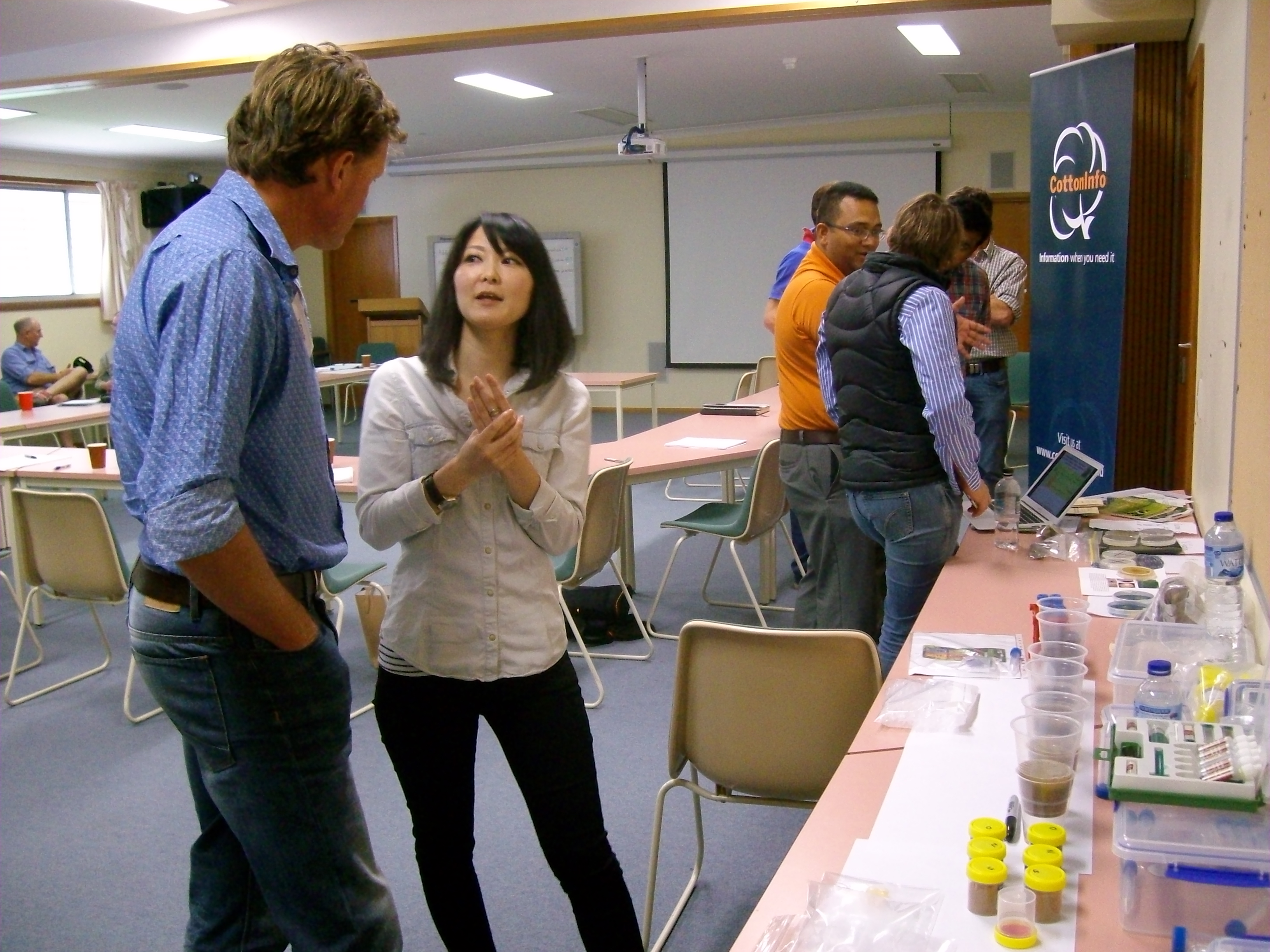
Dr Yui Osanai demonstrating some simple ways to observe soil properties that contributes to soil health
The workshop was organised in partnership with CRDC, CSIRO and NSW DPI.
The organisers would like to especially thank the support received from the CRDC (via Allan Williams) for attracting quality participants and to the Cotton Info team for sponsoring the workshop dinner.
We are very grateful for the hard work and contribution of each presenter, in addition to the valuable discussions and enthusiasm contributed by each participant. The workshop would not have been a success without your support. Thank you.
Photographs by Jasmine Grinyer and Yui Osanai. Web layout by David Thompson.